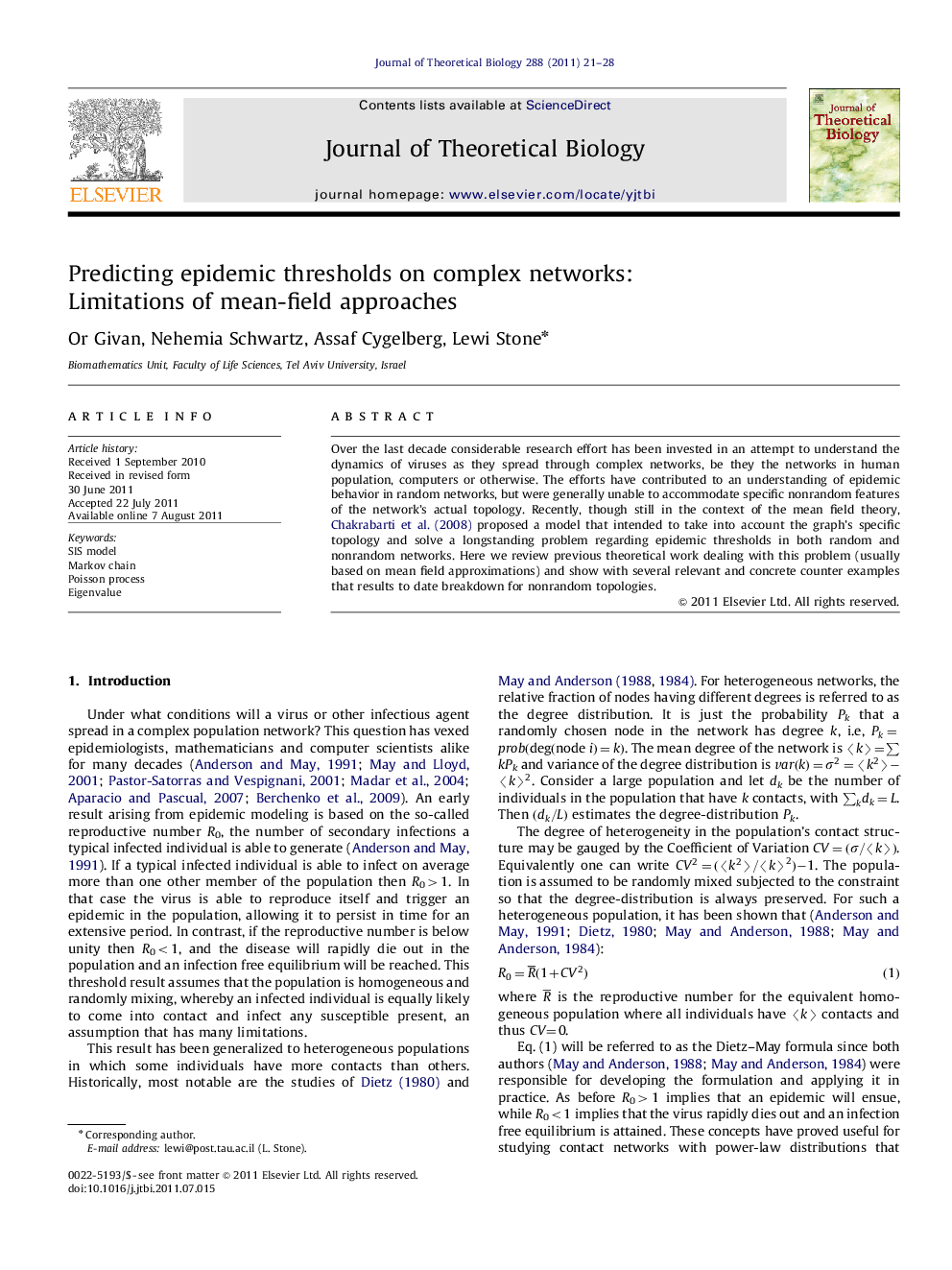| کد مقاله | کد نشریه | سال انتشار | مقاله انگلیسی | نسخه تمام متن |
|---|---|---|---|---|
| 4496879 | 1623922 | 2011 | 8 صفحه PDF | دانلود رایگان |

Over the last decade considerable research effort has been invested in an attempt to understand the dynamics of viruses as they spread through complex networks, be they the networks in human population, computers or otherwise. The efforts have contributed to an understanding of epidemic behavior in random networks, but were generally unable to accommodate specific nonrandom features of the network's actual topology. Recently, though still in the context of the mean field theory, Chakrabarti et al. (2008) proposed a model that intended to take into account the graph's specific topology and solve a longstanding problem regarding epidemic thresholds in both random and nonrandom networks. Here we review previous theoretical work dealing with this problem (usually based on mean field approximations) and show with several relevant and concrete counter examples that results to date breakdown for nonrandom topologies.
► We review previous mean field approximations theoretical work on epidemic thresholds.
► We examine the theoretical thresholds in both random and nonrandom networks.
► We show that results to date breakdown for nonrandom topologies.
Journal: Journal of Theoretical Biology - Volume 288, 7 November 2011, Pages 21–28